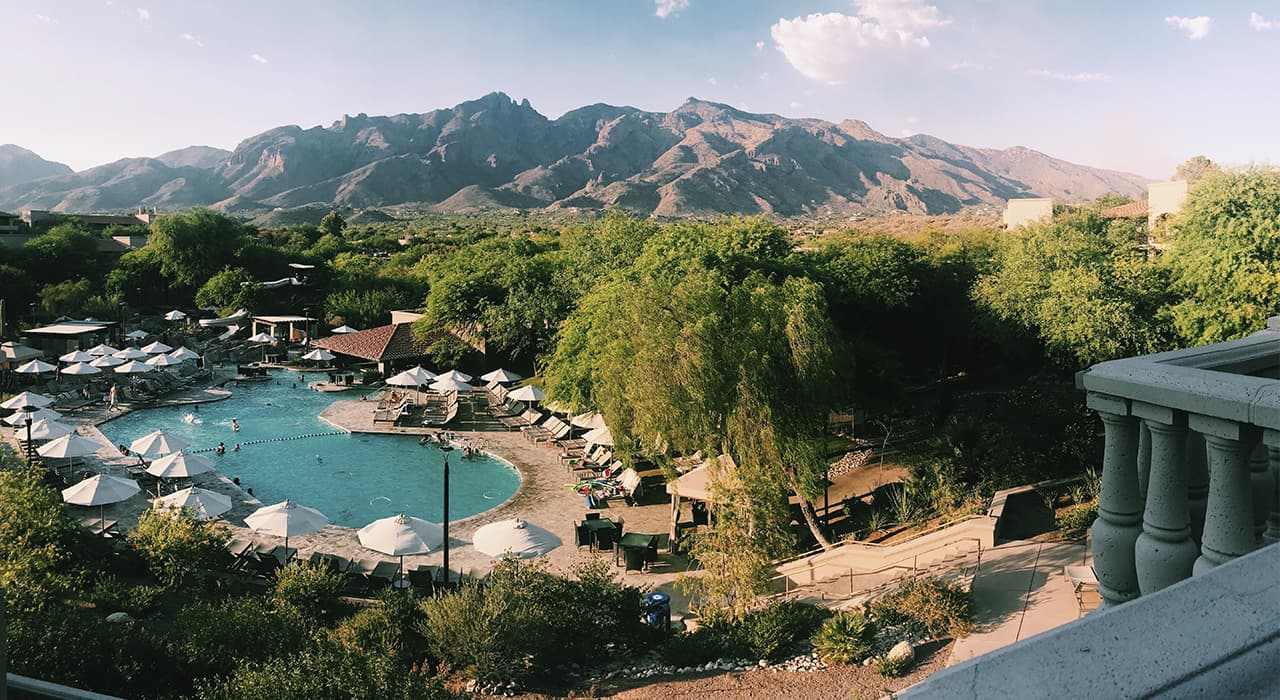Sedona is a small town in northern Arizona in the US, a real oasis in the desert lands at the very edge of the Colorado Plateau, surrounded by red rock formations, a picturesque canyon and coniferous forests. And as nature and hiking enthusiasts, we couldn’t miss Sedona and not include it in our itinerary of the southwestern US. Thanks to its fortunate location at the foot of the mountains, Sedona is renowned for its fairly mild climate. Its natural beauty and stunning panoramic views as well as energetic vortexes have attracted some of the most creative people from all over the world. Sedona has many interesting sights and a large number of art galleries filled with new age artworks. And there are plenty of trails for hiking and jeep tours around the city.
The area, now known as Sedona, was inhabited for hundreds of years by a group of Vipukepa from north-east Yavapai before their forced removal in 1875. The Yavapai called it Vipuk, the Middle Earth, where the first humans appeared. To the first Spanish travellers who crossed the high-mountain desert, it appeared as a barren wasteland, merely a natural obstacle to the Californian gold. Conceded by Mexico in the early nineteenth century, there were few white settlers until the end of that century. Then the Southwest became ‘charmland’, a resort and tourist attraction for wealthy coastal urban centres whose residents flocked here for respite, first to health resorts offering dry air to reduce consumption, then to hotels and golf courses offering year-round relaxation. sun and expanses of empty space.
The rocky deserts and parched plateaus of the Southwest have given rise to fantastic legends of humans and other creatures. Alien mythology has its roots in the Southwest; New Mexico is home to Roswell, from Nevada to Area 51, Arizona to the mysterious lights in the sky above Phoenix. Arizona is also rich in frontier mythology as the final battlefield of ‘cowboys and Indians’. It is still home to the largest indigenous reservation in the continental US; the forced relocations and marches of former occupiers are a recent historical memory. It has served as a cinematic backdrop for westerns, living as a frontier in imaginary Hollywood. Sedona was founded in the late nineteenth century after the forced removal of the Yavapai.
Sedona sits in a network of red-rock canyons and along the banks of Oak Creek, one of the few sources of fresh water in Northern Arizona. The contrast of bright sandstone against the open blue Arizona sky and growing green trees creates a breathtaking view, especially when approached from the surrounding barren desert landscape. Sedona is a sacred site of new age spirituality. Its centrality is evidenced by comparisons in literature to Mecca.
The notion that Sedona is a vortex of invisible but powerful spiritual energy is relatively recent, and can be traced back to the second half of the twentieth century in historical accounts. It became known for ‘vortices’, red rock formations that are said to have spirals of special energy flowing through them. Since the 1980s it has attracted people involved in new age spirituality who claim it is a sacred place. Locals claim that the vortices were known to Native Americans, who considered the whole area sacred. Ayres describes the emergence of new age events in Sedona as due to the support of a realtor named Mary Lou Keller, who in the 1960s had a building on the hillside where she allowed people to hold spiritual events for free. According to Keller himself, the vortexes were known to Native Americans and then Ruby Focus, a group now called Rainbow Ray Focus, which still has a presence in Sedona, came with channelling information about the vortexes and bought property next to the Airport Mesa vortex through Keller. in 1963. she says this originated, despite other claims.
Vortex guides usually credit Dick Sutphen and Page Bryant, a pair of psychics who claimed to have sensed vortices in the 1980s. Sutphen has made a career out of psychic seminars held on Sedona vortices, aimed at developing psychic abilities, and publishing books on vortices and their powers. According to Ayres, Sutphen and Bryant were only “spreading” the vortices along with Pete Saunders, another famous Sedona psychic. The claim that Native Americans knew about the vortices is part of a strategy of legitimisation. If the special energy is an inherent property of the earth, then it would have been known to previous inhabitants, who are considered more spiritual by New Age people.
Tourism has long replaced the three s’s in Arizona: cattle, copper and cotton. Sedona is a shining jewel in the industry, attracting 3,000,000 4,000,000 XNUMX-XNUMX XNUMX XNUMX visitors a year. New Age spirituality is an important part of this tourist attraction. At first, the Sedona City Council and Chamber of Commerce neglected the influx of spiritual seekers, for example, by banning camping within the city limits to drive wandering newcomers out of town. Now the Chamber of Commerce gives out maps of the location of the vortexes. Sedona’s reputation as a metaphysical or spiritual destination is part of its appeal to visitors, and the eddies play a role alongside spas, spas and hotels offering massage, meditation and yoga during wellness holidays. Uptown’s affluent shopping district is dotted with shops offering crystals, psychic readings and healing techniques. [Image right] Guides offer trips around the vortexes, UFO sighting tours and nature hikes. This is part of a well-established overlap between new age spirituality and business.
